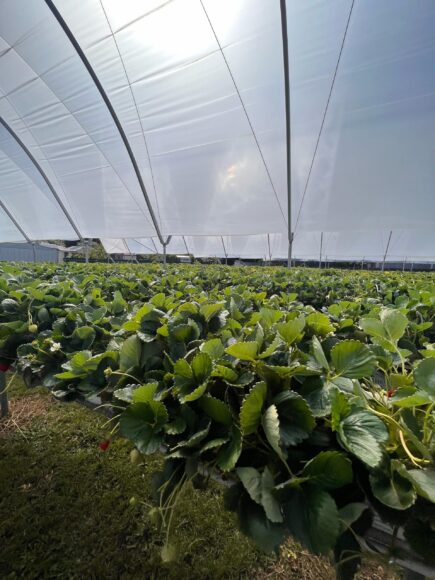What is a Hoop House?
A hoop house, also called a high tunnel, is a simple greenhouse structure that is easy to build and maintain. The frame of the hoop house is typically made from metal, PVC pipes, or other bendable materials, which are shaped into a series of arches, or "hoops." These hoops are then covered with a layer of plastic sheeting or polyethylene to create an enclosed space that traps heat and protects plants from wind, rain, and frost.
Unlike more traditional greenhouses, hoop houses do not rely on artificial heating. Instead, they capture solar energy during the day to warm the inside, maintaining a stable temperature that allows plants to grow even during cooler months. Ventilation can be achieved by manually opening the ends of the structure or using roll-up sides to regulate temperature and humidity inside.
Benefits of a Hoop House
A hoop house offers several advantages to gardeners, from extending the growing season to protecting plants from pests and extreme weather.
Extended Growing Season: The most significant benefit of a hoop house is the ability to extend the growing season. With the protection it provides, you can start planting early in the spring and continue harvesting crops well into the fall or even winter. Some hardy crops like spinach, kale, and carrots can thrive year-round in a well-maintained hoop house.
Weather Protection: Plants inside a hoop house are shielded from the worst of the weather, whether it's freezing temperatures, heavy rain, or snow. This makes it easier to grow delicate plants that would otherwise be damaged by extreme weather conditions.
Improved Crop Yield: Because a hoop house creates an optimal growing environment by controlling temperature, humidity, and airflow, many gardeners report higher yields from their crops. The consistent, warm conditions also allow for faster plant growth, reducing the time between planting and harvesting.
Pest Control: A hoop house acts as a physical barrier against pests like insects, birds, and rodents, keeping your plants safe without the need for chemical pesticides. Additionally, the controlled environment inside a hoop house makes it easier to spot and address any pest problems that may arise.
How to Build a Hoop House
Building a hoop house is a relatively simple project, even for novice gardeners or DIY enthusiasts. The following steps provide a basic outline for constructing a small-to-medium-sized hoop house:
Choose a Location: Select a flat, well-drained area in your garden with good sun exposure. The orientation of the hoop house is important; east-west alignment is often preferred to maximize sunlight.
Materials: Gather materials such as PVC or metal pipes for the frame, plastic sheeting for the cover, and stakes or anchors to secure the structure to the ground. You may also need clamps or zip ties to attach the plastic sheeting to the frame.
Build the Frame: Begin by driving stakes into the ground to mark the corners of the hoop house. Then, bend the PVC or metal pipes into arches and secure them to the stakes. Space the arches evenly to ensure structural integrity.
Cover the Frame: Drape the plastic sheeting over the frame and secure it tightly, making sure there are no gaps where cold air can enter. hot house coffs harbour Use clamps, zip ties, or bungee cords to attach the plastic to the frame. If desired, install roll-up sides or vents for better temperature control.
Prepare the Inside: Once the structure is complete, prepare the ground inside by laying down mulch or preparing raised beds. You’re now ready to plant!






Comments